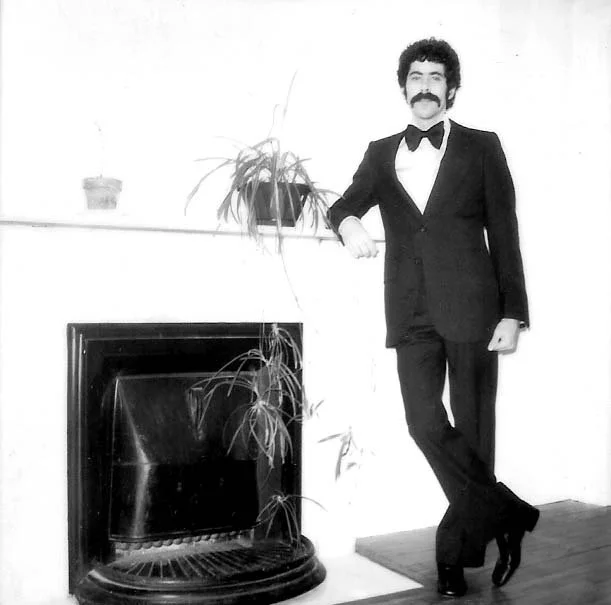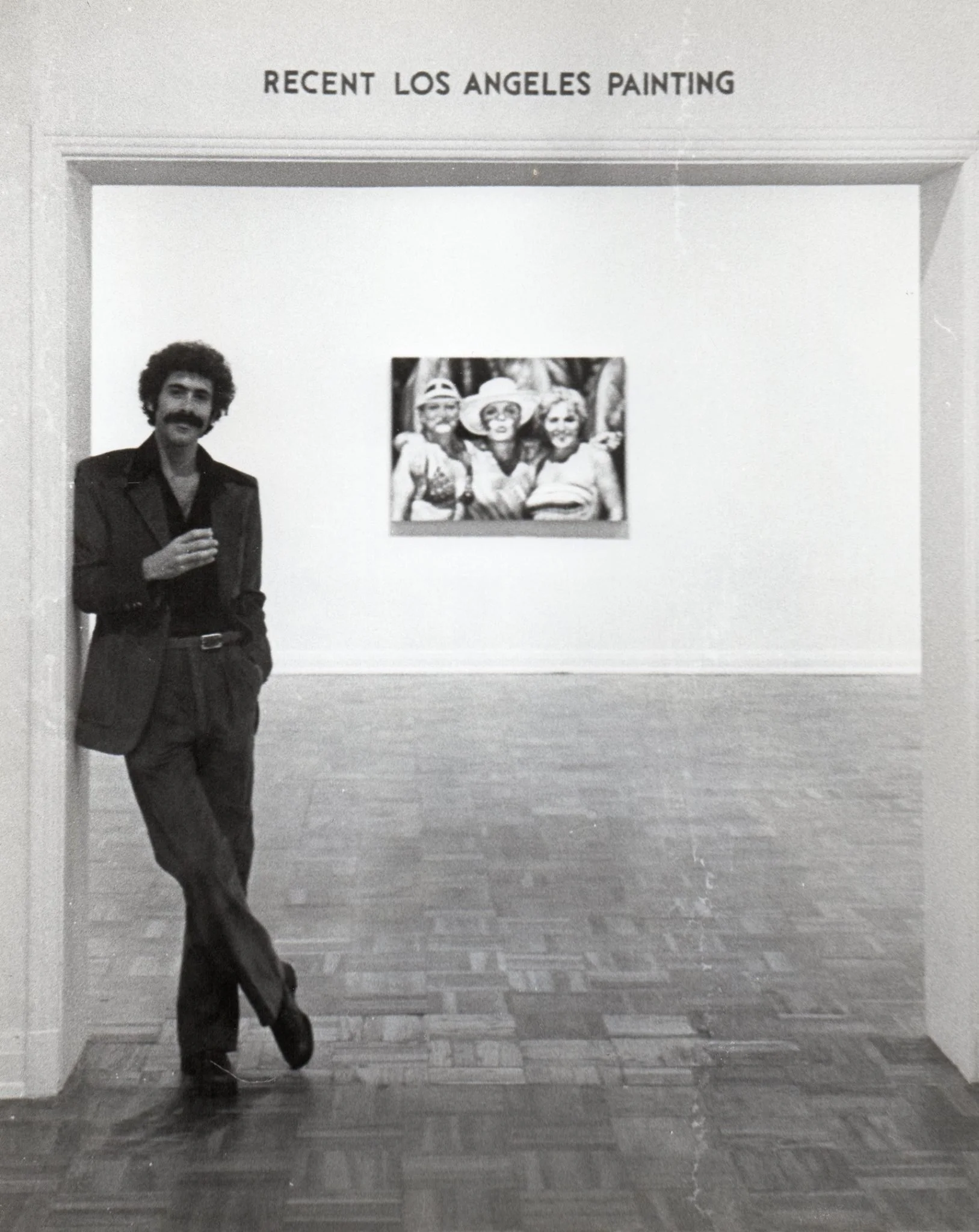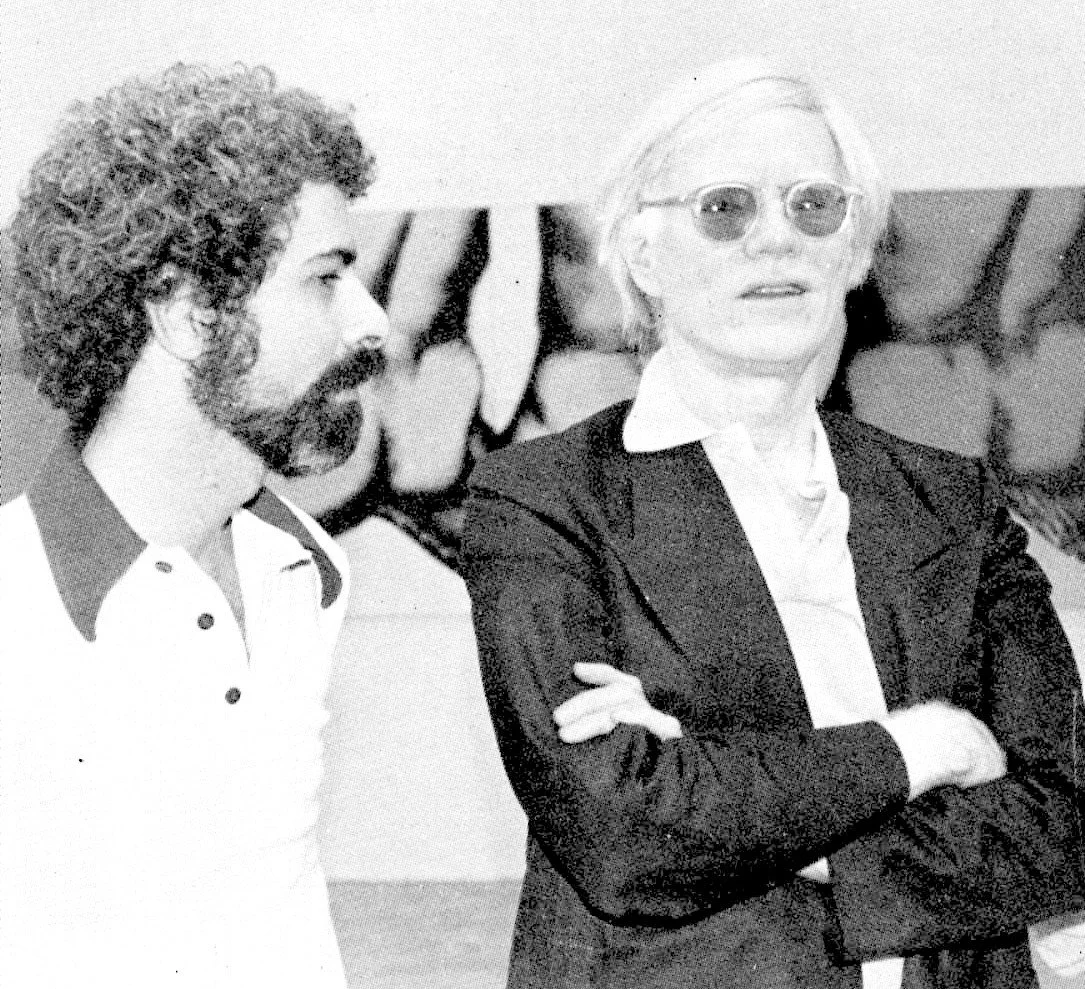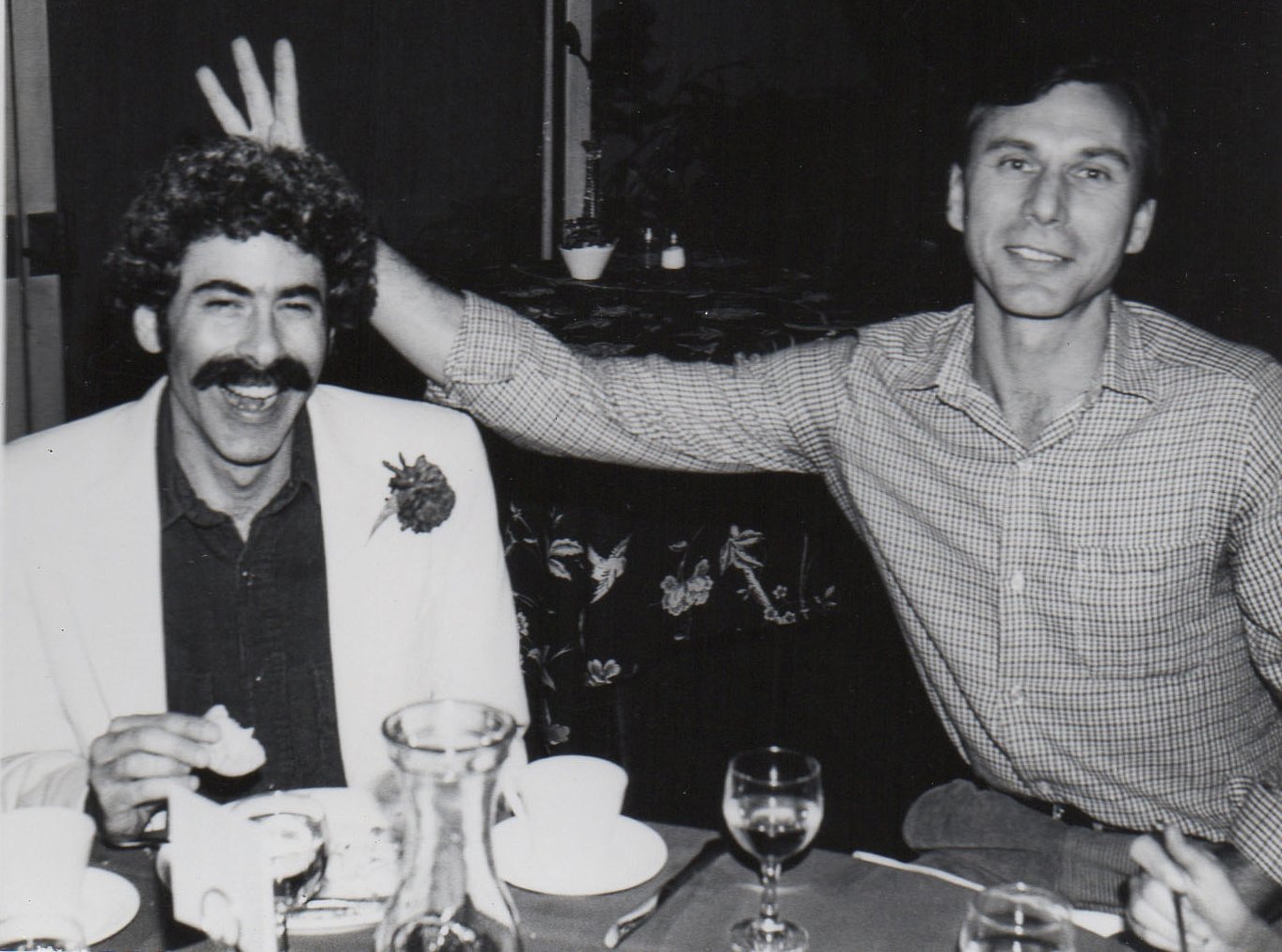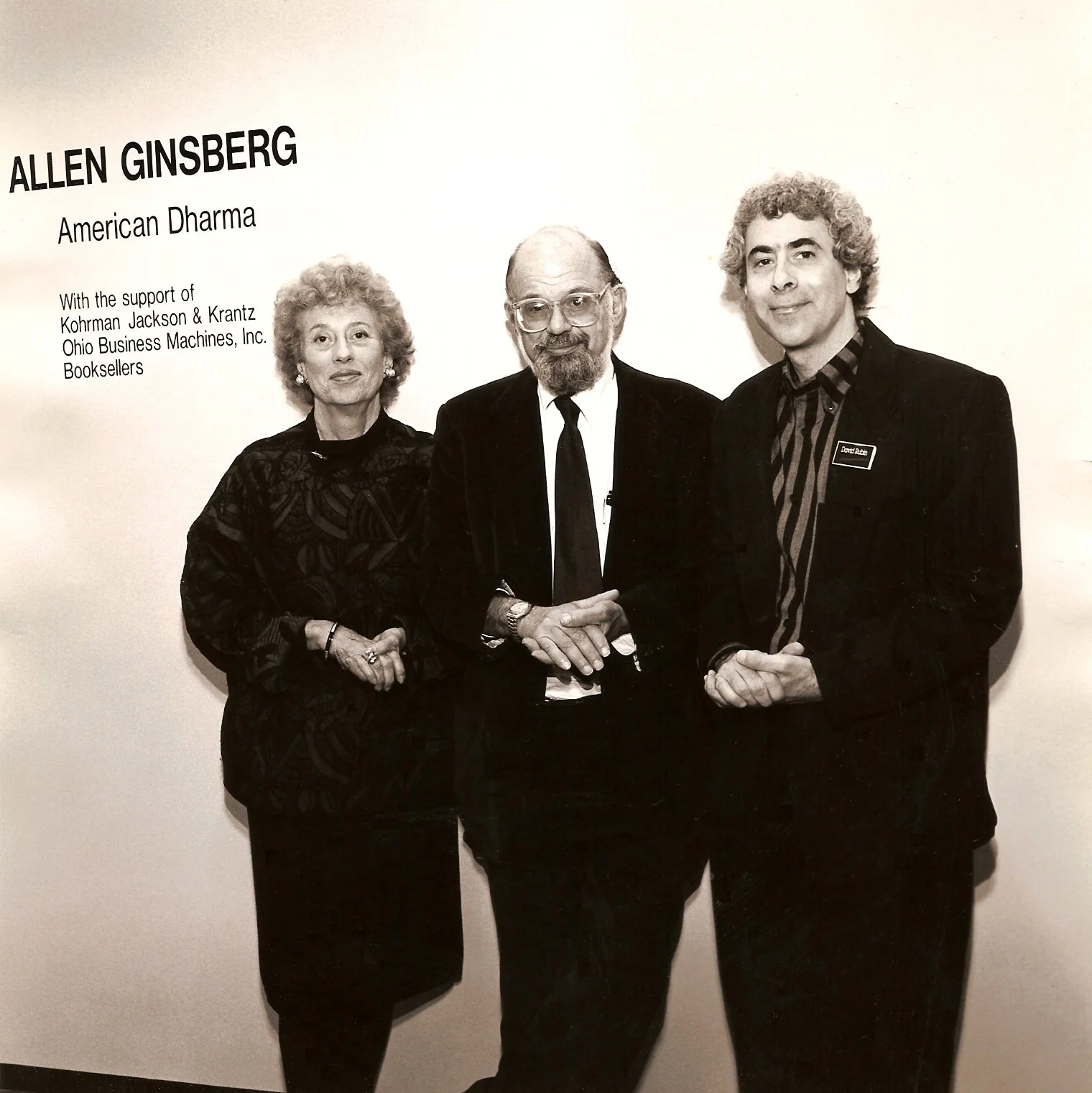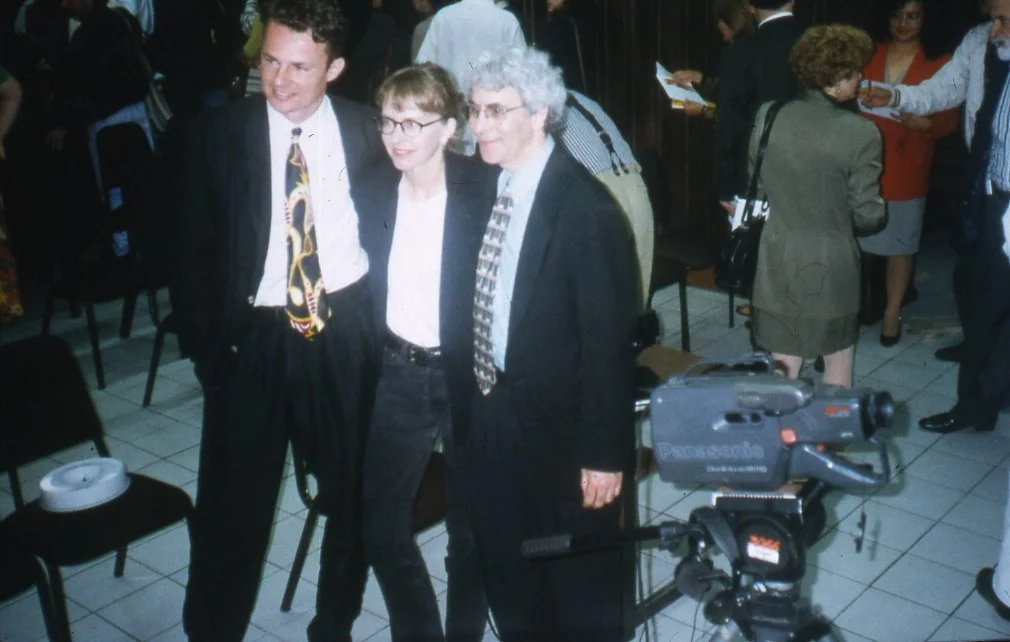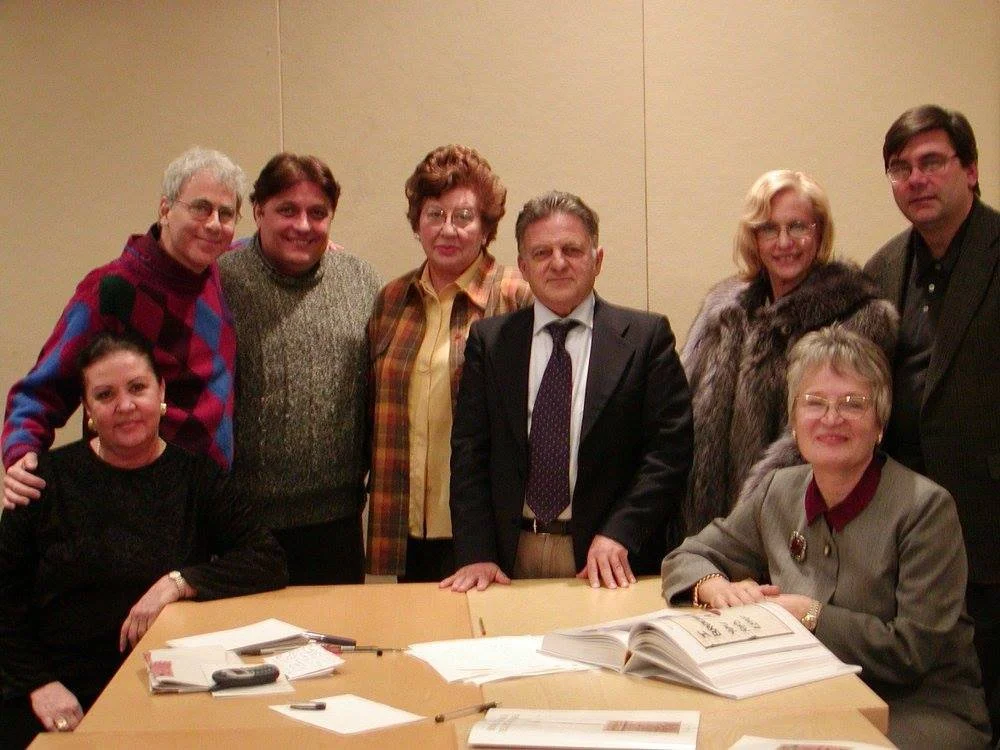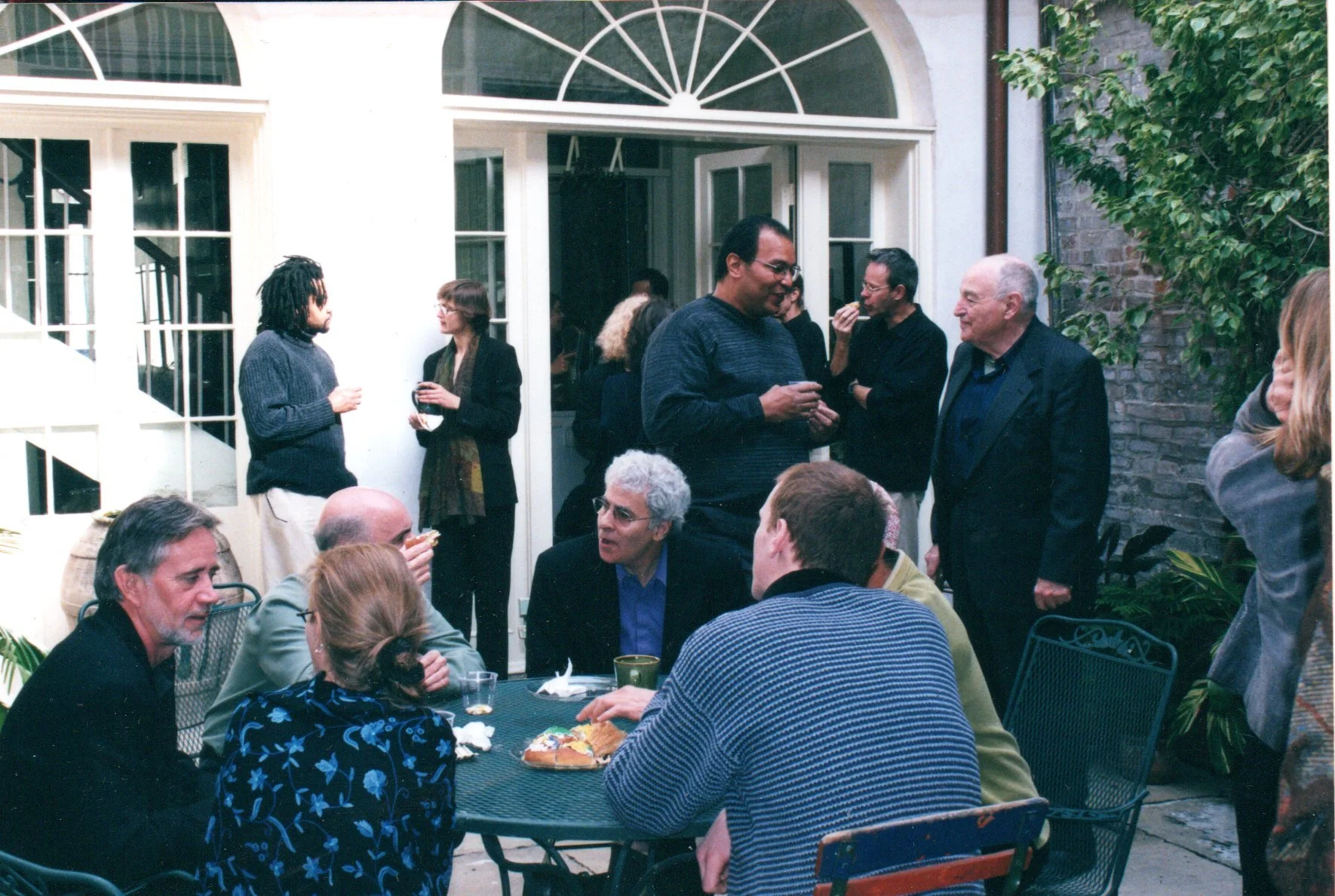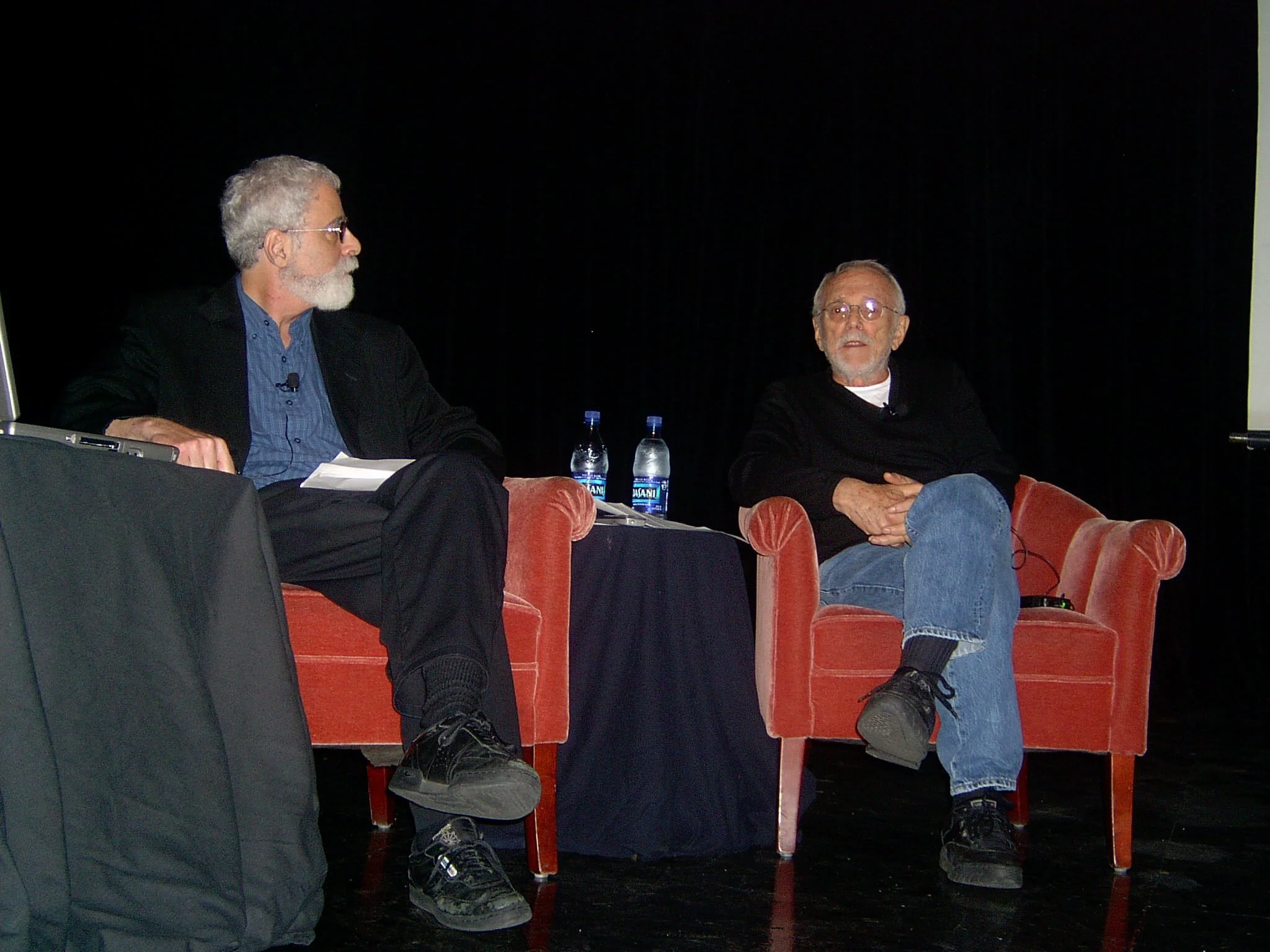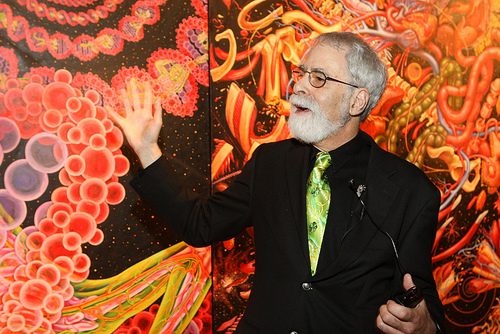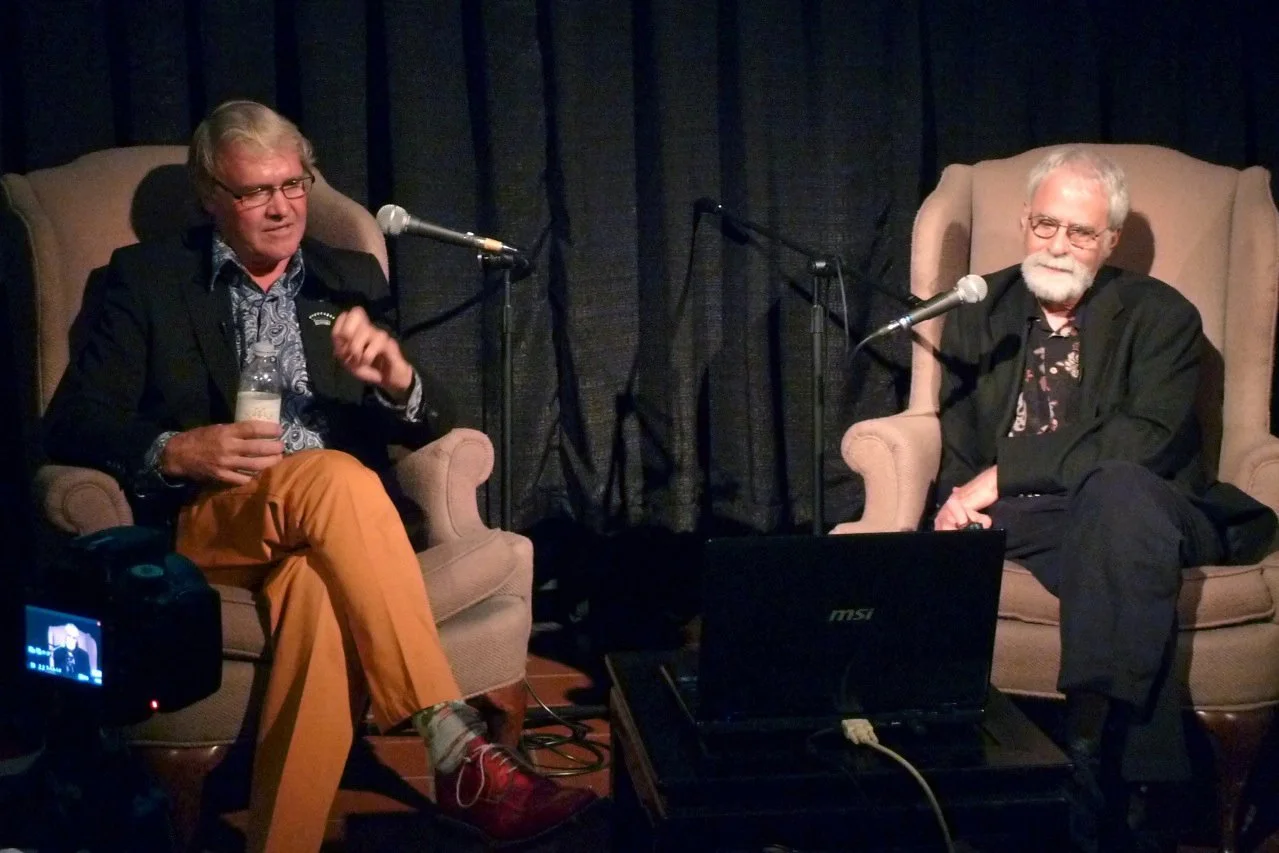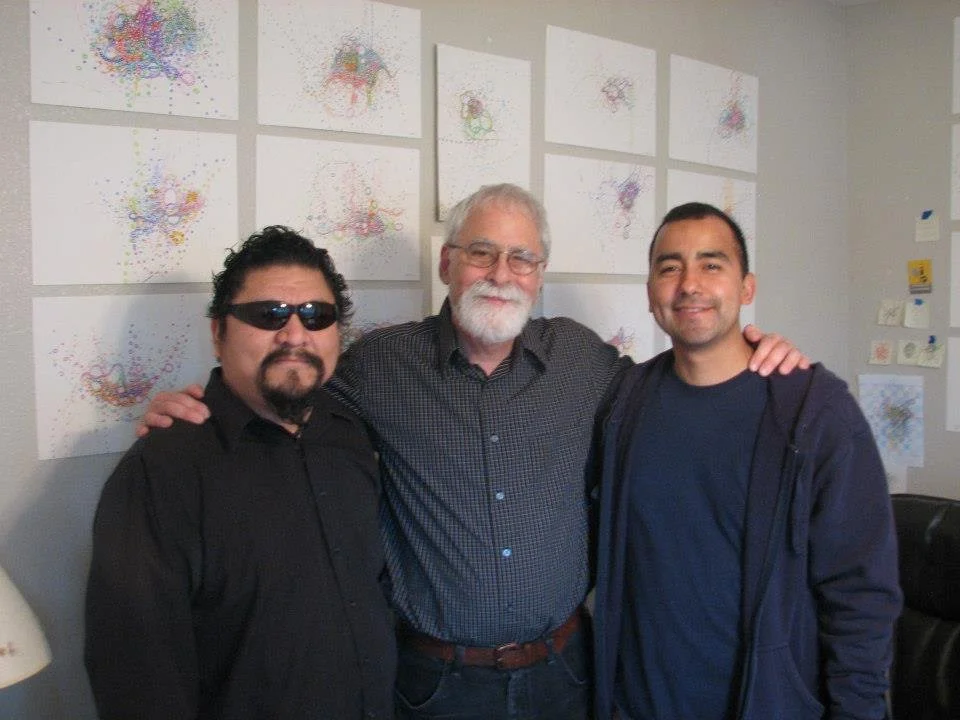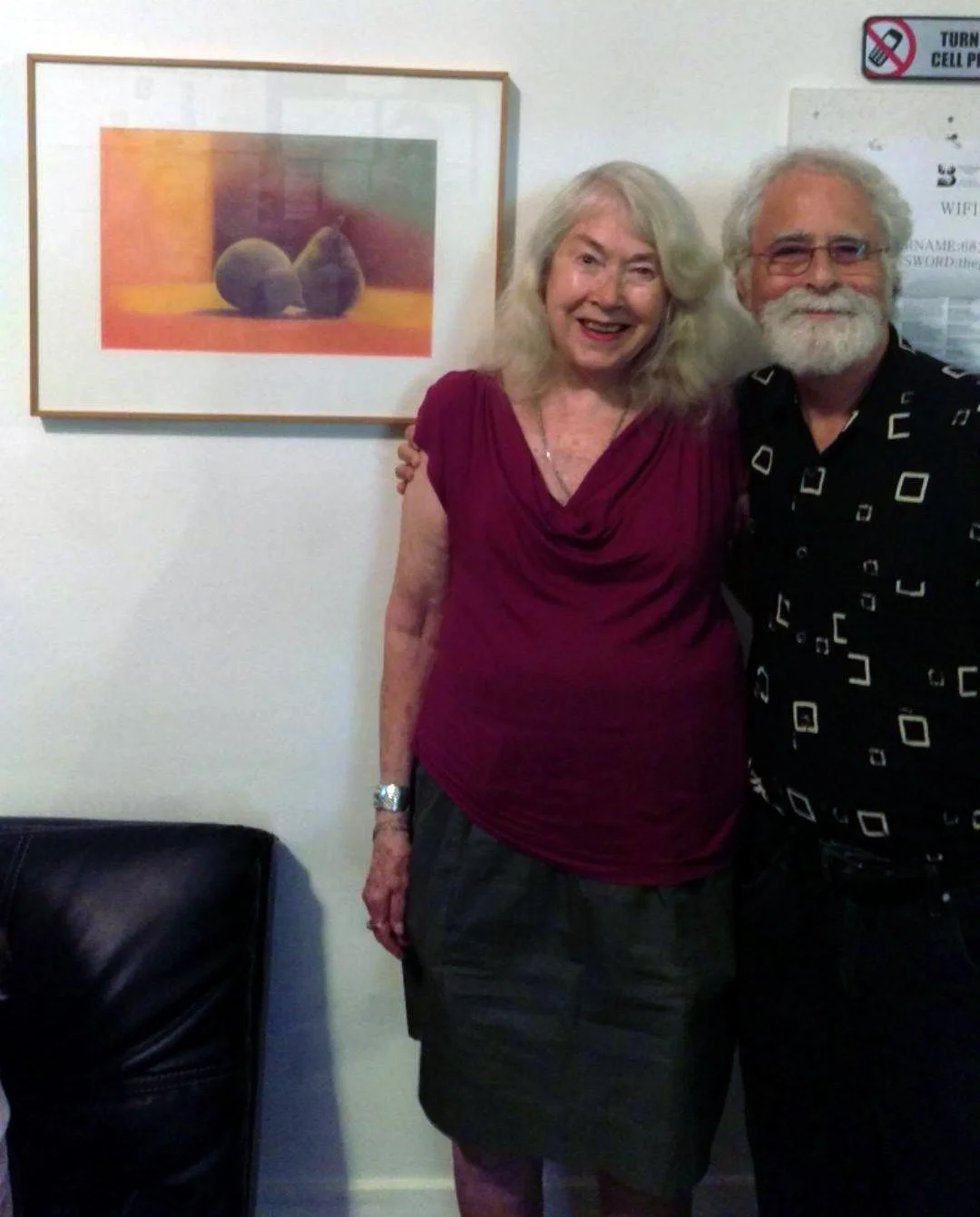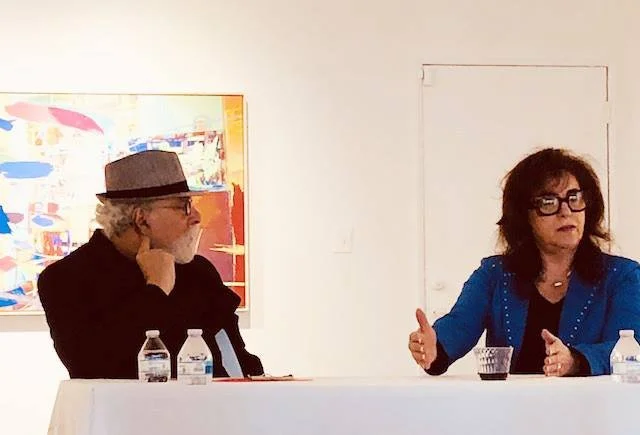David S. Rubin: Education
David S. Rubin was born in Los Angeles, California on June 18, 1949. He earned a BA degree in Philosophy at the University of California, Los Angeles in 1972. While taking art history courses as electives, Rubin correctly identified an unknown bronze as a fake on a midterm exam in a Chinese Art History course. As a result, he received encouragement from Professor Donald F. McCallum and went on to study art history at Harvard University’s Fogg Art Museum. Although his UCLA professor saw him as a protégé in the field of Japanese art history, once at Harvard Rubin discovered that he felt more at home in the field of Modern and Contemporary art. This new direction was brought on in part by Rubin’s participation in a seminar on the Cubist artist Jacques Villon, where six students selected works and wrote catalog entries for the artist’s retrospective exhibition. Rubin also took museum studies courses taught by Agnes Mongan and Daniel Robbins. After earning his MA at Harvard in 1974, Rubin received a grant to study the New York School in New York City. From 1975-77, he researched the relationship between Surrealist automatism and the origins of Abstract Expressionism, with a focus on group automatic drawing sessions at the home of Roberto Matta Echaurren that were attended by Jackson Pollock, Robert Motherwell, William Baziotes, and others. During this period, Rubin conducted interviews with Motherwell, Lee Krasner, Ethel Baziotes, Gordon Onslow-Ford, Peter Busa, Fritz Bultman, William Copley, and others who were active in that scene. During his New York period, Rubin published his first article in Arts Magazine and subsequently began reviewing exhibitions. He also held a summer fellowship at the Solomon R. Guggenheim Museum and taught a thematic survey course in art history at the School of Visual Arts.
Left: At the opening of “Jacques Villon,” Fogg Art Museum, Harvard University, 1976
LOS ANGELES: EMERGENCE AS AN ART HISTORIAN, CURATOR, AND CRITIC
In 1977, Rubin returned to his hometown of Los Angeles to assume the dual roles of Assistant Director of the Galleries of the Claremont Colleges and Assistant Professor of Art History at Scripps College, positions he held until 1982. During his Claremont years, Rubin organized numerous exhibitions, continued to write for Arts Magazine, and also Art in America and California-based Artweek and ArtScene, and fell in love with the vibrant Los Angeles art milieu. Although he completed 3½ chapters of his doctoral dissertation (now housed in the Smithsonian Institution’s Archives of American Art), he ultimately withdrew from the doctoral program to focus on his contemporary art activities. Following his departure from the Claremont Colleges, Rubin organized an exhibition for Security Pacific National Bank in downtown Los Angeles, was curator for the 2nd Annual Los Angeles Visual Arts Festival, and took on a halftime position as gallery director at Santa Monica College.
At the entrance to “Recent Los Angeles Painting,” Lang Art Gallery, Scripps College, Claremont, CA, 1979 (painting by D.J. Hall)
Interviewing Andy Warhol, Ace Gallery, Venice, CA, September 23, 1978
With George Herms at the reception for “Contemporary Triptychs,” Montgomery Art Gallery, Pomona College, Claremont, CA, 1982
SAN FRANCISCO: DEVELOPING A CURATORIAL VISION
Rubin moved to San Francisco in 1983, when he was hired as Director of Exhibitions at the San Francisco Art Institute (SFAI) and Adjunct Curator at the San Francisco Museum of Modern Art, where he oversaw retrospective exhibitions for Lee Krasner and Robert Motherwell. At SFAI, he organized major retrospectives for Beat generation artists Jay DeFeo and Wally Hedrick and curated “Concerning the Spiritual: The Eighties,” featuring Los Angeles and San Francisco artists whose work explored spirituality in a contemporary context.
Right: Rubin (in white suit) organized the first Artists’ Valentines Auction at the San Francisco Art Institute in 1984. Robert Colescott performed on drums. Photo by Alex MacDonald
“In the eighties, we are again experiencing cultural restlessness, where amidst the screeching of the artists who express themselves with anger, can now be heard the softer pleas of those who turn inward, searching for the healing and nurturing alternatives to rage.”
— David S. Rubin, Catalog essay, Concerning the Spiritual: The Eighties, San Francisco Art Institute, July 1985
With H.E. Situ Rinpoche, “Art and Spirituality: Two Views,” in conjunction with the exhibition “Concerning the Spiritual: The Eighties,” San Francisco Art Institute, 1985
Public sculpture by Mary Miss at Albright College, 1987-1991
Photo: Herbert Ascherman
READING, PA AND NEW YORK CITY: A WORKING LABORATORY
In 1986, Rubin took a position directing a small college art gallery in Reading, Pennsylvania with a distinguished track record. Rubin said “yes" because the dean at Albright College, home to the Freedman Gallery, offered him a mandate to travel to New York City frequently and bring the cutting edge art back to the college to “stir things up.” Rubin considers this venue as having been a working laboratory for exploring numerous creative ideas. During this period he organized several groundbreaking thematic exhibitions, including “Computer Assisted: The Computer in Contemporary Art,” “Contemporary Hispanic Shrines” and “Art About AIDS,” one of the first exhibitions to document artists’ responses to the AIDS epidemic. He also organized retrospective exhibitions for Cynthia Carlson and Donald Lipski, and oversaw an artist/architect collaboration between Adele Santos and Mary Miss.
Left: Rubin was the project director for an artist/architect collaboration between Mary Miss and Adele Santos, architect for the new center for the arts
CLEVELAND: GROUNDBREAKING EXHIBITIONS
Next, Rubin was hired as Associate Director/Chief Curator of Cleveland Center for Contemporary Art, which today is known as the Museum of Contemporary Art, Cleveland. With support from founding director Marjorie Talalay, Rubin curated “Cruciformed: Images of the Cross since 1980,” a project he had been thinking about for several years. On the heels of its success, he was invited by the board to develop another scholarly yet risk-taking exhibition. So he came up with “Old Glory: The American Flag in Contemporary Art,” the first major survey exhibition on the topic. He also curated solo exhibitions for Ellen Brooks, Petah Coyne, Allen Ginsberg, Ana Mendieta, Dennis Oppenheim, Martin Puryear, Alison Saar, and others, and he was project director for “Outside the Frame: Performance and the Object,” which involved numerous complex installations. During his tenure in Cleveland, Northern Ohio LIVE magazine awarded Rubin the “Award of Achievement in Visual Arts” for “Cruciformed” and “Old Glory,” as well as a “Career Achievement Award” for his four years at the Cleveland Center.
Left: With Allen Ginsberg and Marjorie Talalay, founding director of Cleveland Center for Contemporary Art (later renamed Museum of Contemporary Art Cleveland), 1991
“We are a culture that speaks to one another in signs and symbols—in visual codes that more often than not have multiple meanings. While not the only emblem available today from the vast image lexicon, the cross has proven to be among the most effective and expedient communications vehicles of our time, as it is minimal in form, substantive in content, historically grounded, and accessible to all.”
— David S. Rubin, “Primary Structures, Metaphors, and Emblems: Crosses in Contemporary Art,” Cruciformed: Images of the Cross since 1980, Cleveland Center for Contemporary Art, 1991
“In 1775, as the colonists battled for freedom against the British for the first time at Breed’s Hill and Bunker Hill near Boston, they hoisted a variety of flags of various designs and colors, none of which resembled the stars-and-stripes format adopted in 1777. Today, a parallel battle is taking place, as artists fight for a different kind of freedom—the right to free expression guaranteed by the First Amendment. Once again, a variety of flags of various designs and colors are being hoisted, but now they are thrust into the forefront of contemporary culture and, this time—with just cause—they exist as potent variations of the original.”
— David S. Rubin, “From U.S.A. to S.O.S.: Changing Perspectives on the American Flag,” Old Glory: The American Flag in Contemporary Art, Cleveland Center for Contemporary Art, 1994
“Art serves many functions, but the most important function is to stir people and to get them to feel something and, if it does that, history has proven its great art!”
— David S. Rubin, Remarks given in interview with NBC news affiliate following public protests of the exhibition “Old Glory: The American Flag in Contemporary Art.” Phoenix, Arizona, March 17, 1996
PHOENIX: NATIONAL AND INTERNATIONAL CURATORIAL RECOGNITION
Rubin received an offer in 1994 to serve as Curator of Twentieth Century Art at the Phoenix Art Museum, working with an exceptional curatorial team under the expert leadership of Director James K. Ballinger. Ballinger had seen the “Old Glory” exhibition when he interviewed Rubin in Cleveland, and decided to bring the exhibition to Phoenix where, in 1996, it created a national controversy. Ballinger was also interested in another Rubin project, “It’s Only Rock and Roll: Rock and Roll Currents in Contemporary Art.” Originally conceived by Rubin while the Rock and Roll Hall of Fame and Museum was under construction in Cleveland, the exhibition’s administrative duties were taken over by Exhibition Management, Inc., which toured the exhibition to Phoenix and twelve other American museums from 1995-98. While working at the Phoenix Art Museum, Rubin was selected as the U.S. Commissioner for the 1996 Cuenca Bienal of Painting in Ecuador. He also organized the “1998 Phoenix Triennial,” for which he visited 200+ artist studios in four states over a nine month period, and oversaw production and contributed an essay to a monograph on Phoenix artist Philip C. Curtis. Rubin devoted much of his time in Phoenix to working with Contemporary Forum, the museum’s contemporary art support group, and functioning as the museum’s liaison to local artists.
“As listeners and sometimes also as performers, contemporary artists continue to rely upon rock and roll music as a necessary stimulant for an expansive range of creative output that crosses the entire spectrum of expressions—from conceptual to impassioned, reality-based to fabricated, aesthetic to socially responsive. Collectively, these artists bring their unique contributions to fulfilling Danny and the Juniors’ musical prediction of 1959, that rock and roll is here to stay.”
— David S. Rubin Catalog essay, It’s Only Rock and Roll: Rock and Roll Currents in Contemporary Art, Exhibition Management, Inc., 1995
Touring David Crosby and Graham Nash through the exhibition “It’s Only Rock and Roll: Rock and Roll Currents in Contemporary Art” at the Contemporary Arts Center, Cincinnati, 1995
Rubin interviewed on local television news during the “Old Glory” controversy at the Phoenix Art Museum, 1996
With artists Andrew Young and Katherine Bowling at the Cuenca Bienal of Painting in Ecuador, 1996
NEW ORLEANS: CAMELOT AND DELUGE
Although Rubin enjoyed his time in Phoenix, a dream job in the enchanting city of New Orleans lured him there at the turn of the Millennium. From 2000-2006, Rubin served as Curator of Visual Arts at the Contemporary Arts Center, a cutting-edge multidisciplinary arts venue in the Big Easy’s warehouse district. Among Rubin’s major achievements at the CAC was organizing major exhibitions for Louisiana artists Douglas Bourgeois and Willie Birch, with accompanying monographs. He curated numerous solo exhibitions for other New Orleans artists, as well as significant projects for nationally and internationally prominent figures such as Al Held and Christian Marclay. He also produced three biennial exhibitions of Louisiana artists and curated the thematic exhibitions “Photography Now,” “Chelsea Rising,” “Birdspace: A Post-Audubon Artists Aviary” and “The Culture of Queer: A Tribute to J.G. Harter.” Rubin remembers the arts community in New Orleans as ingratiating and loving, and he credits local artists with convincing him to begin exhibiting his drawings. According to Rubin, “New Orleans was really the Camelot of my career, until everything changed with Hurricane Katrina.” After the 2005 hurricane, several of the staff members were laid off and Rubin returned to the venue in 2006 to join a staff of about nine people who remained. Due to water damage from an overturned water tower on the roof, the upstairs offices needed repair, and the gallery was being used for storage. So Rubin joined the others who worked together in the former cybercafé. It was there, in the spring of 2006, that Senators Mary Landrieu and Barack Obama came to see how the CAC was holding up. When the senators walked through the door, Rubin was installing wall reliefs dedicated to John F. Kennedy and Martin Luther King, Jr., which he had the pleasure of pointing out to the obviously delighted Senator Obama. Early during his tenure in New Orleans, Rubin was invited to serve on the international jury for the Florence Biennale, a position that he held four times between 2001 and 2007.
With the other jurors at the 2001 Florence Biennale
With Al Held (second from right) and New Orleans artists at a reception for Held during his exhibition at the Contemporary Arts Center, New Orleans, 2002
Interviewing Arnold Mesches during his exhibition “The FBI Files,” Contemporary Arts Center, New Orleans, 2004
SAN ANTONIO: A SEASONED PROFESSIONAL
Rubin’s final stop at a major museum was in San Antonio, Texas, where he served from 2006-2014 as Curator of Contemporary Art at the San Antonio Museum of Art. Among his notable achievements in that capacity were the 2010 exhibition and book, “Psychedelic: Optical and Visionary Art since the 1960s,”and an ongoing series of Artist Conversations. Rubin also organized annual exhibitions for FotoSeptiembreUSA and several projects devoted to local artists, as he had done in New Orleans. During his San Antonio years, Rubin was an active member of the Art & Architecture Committee of the San Antonio River Foundation. He credits the San Antonio Latinx artist community with offering him essential guidance and support during this period. In 2016, Rubin was invited to donate his curatorial papers (files, photos, correspondence, etc.) to the Smithsonian Institution’s Archives of American Art.
Lecturing in the exhibition “Psychedelic: Optical and Visionary Art since the 1960s,” San Antonio Museum of Art, 2010 (painting in background by Alex Grey) Photo by Justin Parr
Conversation with Gary Sweeney, San Antonio Museum of Art, 2011
In Rubin’s home studio with artists Alex Rubio and Vincent Valdez during the annual “On and Off Fredericksburg Road Studio Tour,” San Antonio, 2013
“In a full turnabout from the elitist attitudes of the twentieth-century artists and critics who elevated the individual ego or championed the concept of ‘art for art’s sake,’ there is a growing populist tendency toward making art that is for everyone. Using psychedelic pictorial languages as seductive visual stimuli, these artists are merely conduits transmitting optically charged information, enticing viewers into sumptuous wonderlands for inquiry, speculation, and connectivity.”
—David S. Rubin, “Stimuli for a New Millennium,” Psychedelic: Optical and Visionary Art since the 1960s, San Antonio Museum of Art, 2010
RETURN TO LOS ANGELES: CURATORIAL PROJECTS, WRITING, AND ARTWORK
In 2017, Rubin returned to his hometown of Los Angeles once again. Since that time, he has organized several exhibitions for Carole Sorell Inc. and he continues to contribute regularly to Visual Art Source and Hyperallergic. He is also devoting more attention to his drawing practice and in 2021 he had a solo exhibition at the California State University Northridge Art Galleries.
With Martha Alf and her work at Beyond Baroque, Venice, CA, 2017. Photo by Eric Campbell
Interviewing Darcy Gerbarg during her exhibition at Castelli Art Space, Los Angeles, 2019
“As a pluralist, I’m open to any genre or medium, but it does have to motivate me first. My basic criteria for curating definitely apply in deciding what to review. I ask four questions: 1) Is it visually engaging? 2) Does it have a fresh and unfamiliar edge? 3) Is there a fair degree of accessibility? 4) Is the work relevant to the time in which it was created?”
— David S. Rubin, Quoted in Ann Landi, “What Turns Critics On (and Off),” Vasari21, January 22, 2020
Exhibiting a drawing at the NOMAD pop-up exhibition, Torrance, CA, 2023. Photo by Scott Taylor


